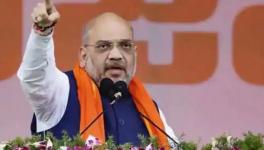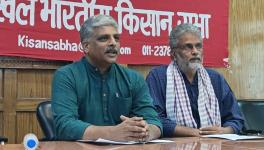How Many X-Factors Can an Election Take? Many, it Seems
The Bihar election swung from one end to the other like a pendulum. It began with a reported “Modi wave”, combined with anti-incumbency against Chief Minister Nitish Kumar. The anti-incumbency was against Nitish’s JD-U, but not the BJP, although they are allies who ruled the state together. It is not as if the BJP had only extended outside support to the Bihar government. Besides, Prime Minister Narendra Modi campaigned alongside Nitish Kumar in these polls, and asked people to vote for the Chief Minister. But people voted for the BJP and not the JD-U. So have people followed Modi’s demand, or have they rejected his politics? Did Modi matter to the electoral outcome, or he did not?
It was later said that people were not unhappy with Modi or the BJP, but why—the reason is never stated. I do not think we have the answer to this question. The migrant crisis was attributed to Nitish Kumar, for he did not want to allow them to enter Bihar when they walked back from various parts of the country. Yet Modi, who imposed the stringent lockdown that caused their exodus in the first place, was not held responsible. Why did migrants make this distinction? In explanation, we were informed that the migrants were not actually that angry.
The pendulum then swung again, to claim a RJD wave and a groundswell in support of the Rashtriya Janata Dal’s Tejashwi Yadav after he made a pitch for creating 10 lakh jobs in the state. He drew great and enthusiastic crowds that were not present even in Modi’s meetings. Individually, the RJD got 75 seats and the BJP was just one short, at 74 seats.
After the results were out, the defeat of the Mahagathbandhan (MGB) was blamed on the Congress party and the fact that it contested on way too many seats (70, of which it won 19). But this, again, made only a marginal difference; for the BJP-led NDA alliance was just able to cross the halfway mark. It has not won a great many more seats than the MGB, and several with absolutely thin margins.
The wafer-thin margins have made the outcome appear more authentic, in terms of giving an indication of how closely the electoral battle was fought. Therefore came an explanatory argument that while JD-U voters have shifted to the BJP but not the other way around—even though Nitish Kumar remained the chief minister candidate of the NDA campaign.
Further mystery was added with the Lok Janshakti Party (LJP) led by Ram Vilas Paswan’s son, Chirag, contesting independently of the NDA this time. He threw wild volleys at Nitish Kumar but was all praise for Modi throughout the campaign. Why did Chirag not once raise the question of Modi going along with “corrupt and inefficient” Nitish, as he constantly alleged? Chirag could have at least made a public appeal to his “master” to reconsider the partnership with Nitish. Not just that. Even Modi remained completely silent on Chirag, in spite of the fact that he had walked out of the NDA in the state polls.
Instead, some noted that the RSS was campaigning for LJP despite not expecting it to score any seat. It was generally concluded that LJP is a “vote-cutter” in the Bihar polls and not playing to win. The question is, why did the LJP accept this proposition, especially since Chirag, a young leader, has just taken over the party and ideally would have wanted to establish himself, as Tejashwi has.
Then the Bahujan Samaj Party is in alliance with the AIMIM, which has managed to win five seats but AIMIM chief Asaduddin Owaisi has refused (so far) to support either block, notwithstanding his ostensible movement against majoritarianism and the RSS. Owaisi has said that he will make up his mind in due course, but does this mean he does not discount supporting the NDA, if need be? Did Owaisi then cut the votes of Muslims from the MGB? Were Muslims so blind as to vote for a “Muslim party” given the emerging situation for Muslims and knowing what role Owaisi has been playing, including in Maharashtra?
We do not know if, or how many, Dalit or backward voters have backed the AIMIM in this election by transfer from its allies, BSP and Upendra Kushwaha of Rashtriya Lok Samata Party, a former NDA constituent. The combined vote share of BSP and AIMIM is 2.73%, while the RLSP has gained 1.77%, which takes their combined total to 4.5%). Even as Muslims in Seemanchal voted for Owaisi, the Dalits remained with LJP and the lower-end OBCs remained with the NDA because of Nitish Kumar. And there was yet another X-factor in these polls, the communist parties which have won 16 seats of the 29 they contested.
Complaints of tampering with the vote counts are being countered by BJP spokespersons with the logic that the communist parties have won many more seats, which is a proof of fairness of this election. However, if communist parties won because there was a shift in the narrative in Bihar to social and economic demands, (even the RJD raised economic issues in its campaign), then how did the BJP manage to do well? If the narrative was set by economic justice, such as jobs and livelihood concerns, why did people vote for the BJP at all? This, we are told, happened because such demands do not change caste equations, and besides, the Modi factor drew votes towards the BJP. Though we are also told that when it comes to the Modi factor, caste does not matter, as constituencies across social cleavages vote for him—but the question is why would they? After all, we are also told that Modi’s popularity is not really a factor in Assembly elections though it can be in general elections; the results in Madhya Pradesh, Chhattisgarh and Rajasthan are cited as proof.
Nevertheless, the combination of all these factors, which conjecture into a narrative of sorts, end up with a fourth term as chief minister for Nitish Kumar. Again, the story does not end here. The NDA has ended up with fewer seats compared to the previous election, but the BJP has bagged more, while the JD-U has proportionately fewer. Yet Nitish Kumar will be made the Chief Minister with a resurgent BJP occupying more ground and eating into the social base of the JD-U.
The suspense continues on whether the BJP will decide to dislodge Nitish after a while and bargain for a BJP leader as chief minister of Bihar. What will Chirag Paswan get? He walked out of the NDA in Bihar but remains part of the NDA at the Centre, so does this mean he will be accommodated in the Centre just like Joytiraditya Scindia is expected to be? Will Owaisi be satisfied with this, and will this help project a narrative that Muslims prefer a “Muslim party” over all other considerations? Will Owaisi provide the necessary Muslim counter-narrative that was missing and had sunk under a larger rubric of social justice in Bihar?
The expansion of the BJP and Owaisi seem to go hand-in-hand everywhere, not just Bihar. Is this not just the kind of buffer AIMIM provides the BJP in Telangana too? Owaisi is a motormouth of secularism but he equates the Congress, RJD and the Left and the BJP/RSS and says he makes no distinction between the blocks they are part of—that they are “all the same”. As Modi said, the results are a victory of democracy!
The author is associate professor, Centre for Political Studies, JNU. The views are personal
Get the latest reports & analysis with people's perspective on Protests, movements & deep analytical videos, discussions of the current affairs in your Telegram app. Subscribe to NewsClick's Telegram channel & get Real-Time updates on stories, as they get published on our website.
























